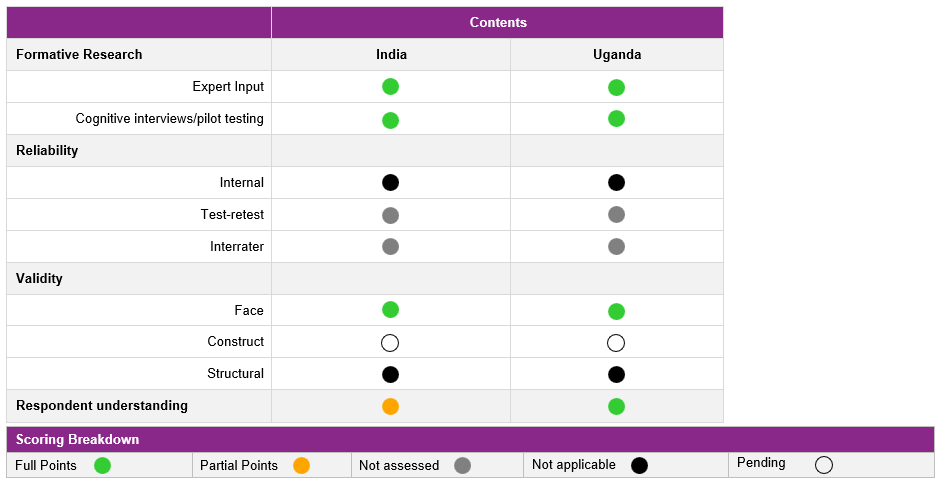This test captures ‘automatic cognition’ (i.e., cognition that is fast, effortless, and occurs with little conscious awareness) regarding the gendered nature of specific activities and occupations. An increasing number of policy interventions aim to change gender norms and biased attitudes against women, including those regarding which occupations it is appropriate for women to work in. However, such implicit attitudes and biases are notoriously prone to measurement error. Rather than the more complex Implicit Association Test (IAT), this tool captures automatic cognition based on the simpler Affect Misattribution Procedure (Miles et al. 2019).
This test can be used to diagnose the strength of automatic cognitive processes regarding gender and occupations in a given population, but also to assess the impact of interventions aiming to shift attitudes or norms. Users may want to use this tool alongside other measures of gender attitudes, as well as the respondent’s current occupation.
Link to: tool content and guidelines, CTO file, and statistical annex
Duration: This tool takes on average 5.48 minutes to be implemented
Permitted use of the tool: users are free to use the tool with citation “MAGNET (2023). Gender and Occupation: Automatic Cognition Test. http://magnet.ifpri.info/gender-and-occupation-automatic-cognition-test/”
Tool sample
The tool includes a total of 66 vignettes, composed of male and female versions of 33 occupations. These occupations include rubber plantation manager, hairdresser, doctor, civil servant, entrepreneur, nurse, and cook, among others. The vignettes can be shown as text or as figurative depictions.
Out of the 66 total gender-occupation combinations, the respondents will be shown 33; 11 per block. After each vignette, the screen will be blank for 0.5 seconds, and a random Chinese character will be shown for 1.5 seconds. After this, the respondent will be asked:
In your opinion, is this Chinese character more pleasant or less pleasant than the average Chinese character?
- More pleasant
- Less pleasant
Measurement properties
- Geographies Tested: India, Uganda
- Populations included: Female, Male
- Age range: Adults
For details on these testing metrics, visit our scoring methodology page.

 International Food Policy Research Institute
International Food Policy Research Institute